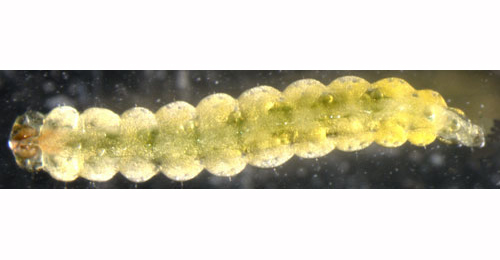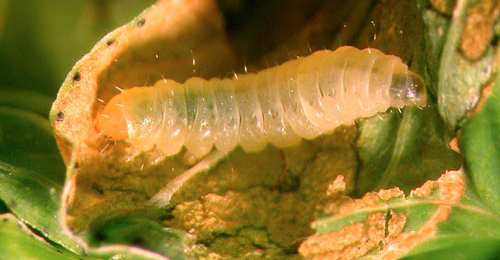|
||||||
|
HYPERICUM. Tutsans and St John's-worts. [Clusiaceae] |
|
|
Twenty-seven species and subspecies of Hypericum are recorded in Britain. These include Tall Tutsan (H. androsaemum), Stinking Tutsan (H. hircinum), Perforate St John's-wort (H. perforatum), Slender St John's-wort (H. pulchrum) and Square-stalked St John's-wort (H. tetrapterum). The BSBI provide a downloadable plant crib for Hypericum. Three British miners are recorded on Hypericum. A key to the European miners recorded on Hypericum is provided in Bladmineerders van Europa. |
|
|
Key for the identification of the known mines of British |
1a > Leaf-miner: In the first instar the larva mines the leaves, forming short, irregular, blotch-like mines, but in later instars it lives externally, feeding in spun leaves and often twisting those of tender shoots. Larval head light-brown or yellowish brown, edged with black postero-laterally, ocellar area blackish; prothoracic plate black edged with whitish anteriorly; abdomen dull dark green; pinacula distinct, black, sometimes brownish but with black bases to setae; anal plate large, black (Bradley et al., 1973). Small, full depth mine without a definite shape; little frass. Some silk is deposited in the mine. The larva soon leaves the mine and continues feeding among spun leaves. |
|
Cnephasia incertana (Treitschke, 1835) [Lepidoptera: Tortricidae]. |
1b > Leaf miner: At first in a narrow gallery, later becoming a blotch mine. Egg on the leaf underside. The mine begins as a long, winding corridor with a broad frass line that is red brown at first, black brown later. The corridor abruptly widens into a slightly inflated blotch where the frass lies concentrated in the centre and where pupation in a coccon takes place. In preparation the larva has cut a semicircular exit slit in the leaf underside, near what later will be the front end of the cocoon. |
 Ectoedemia septembrella larva Image: © Willem Ellis (Bladmineerders van Europa) |
|
Ectoedemia septembrella (Stainton, 1849) [Lepidoptera: Nepticulidae]. |
1c > Leaf miner: Larva initially feeding in a gallery which turns to a blotch and finally one or more conical folds are made. The mine begins as an, occasionally quite long, lower-surface epidermal corridor. Its last section is widened into a blotch. Only then the larva begins to consume parenchymatous tissue and to line the inside of the mine with silk. The upper surface of the mine turns orange brown, and the leaf folds itself around the mine. Frass in a clump in a corner of the mine. In the end the larva leaves its mine, and then lives free in a leaf tip that has been folded downwards. |
 Euspilapteryx auroguttella larva Image: © Jean-Yves Baugnée (Bladmineerders van Europa) |
|
Euspilapteryx auroguttella Stephens, 1835 [Lepidoptera: Gracillaridae]. |
| Last updated 05-Jul-2019 Brian Pitkin | ||

